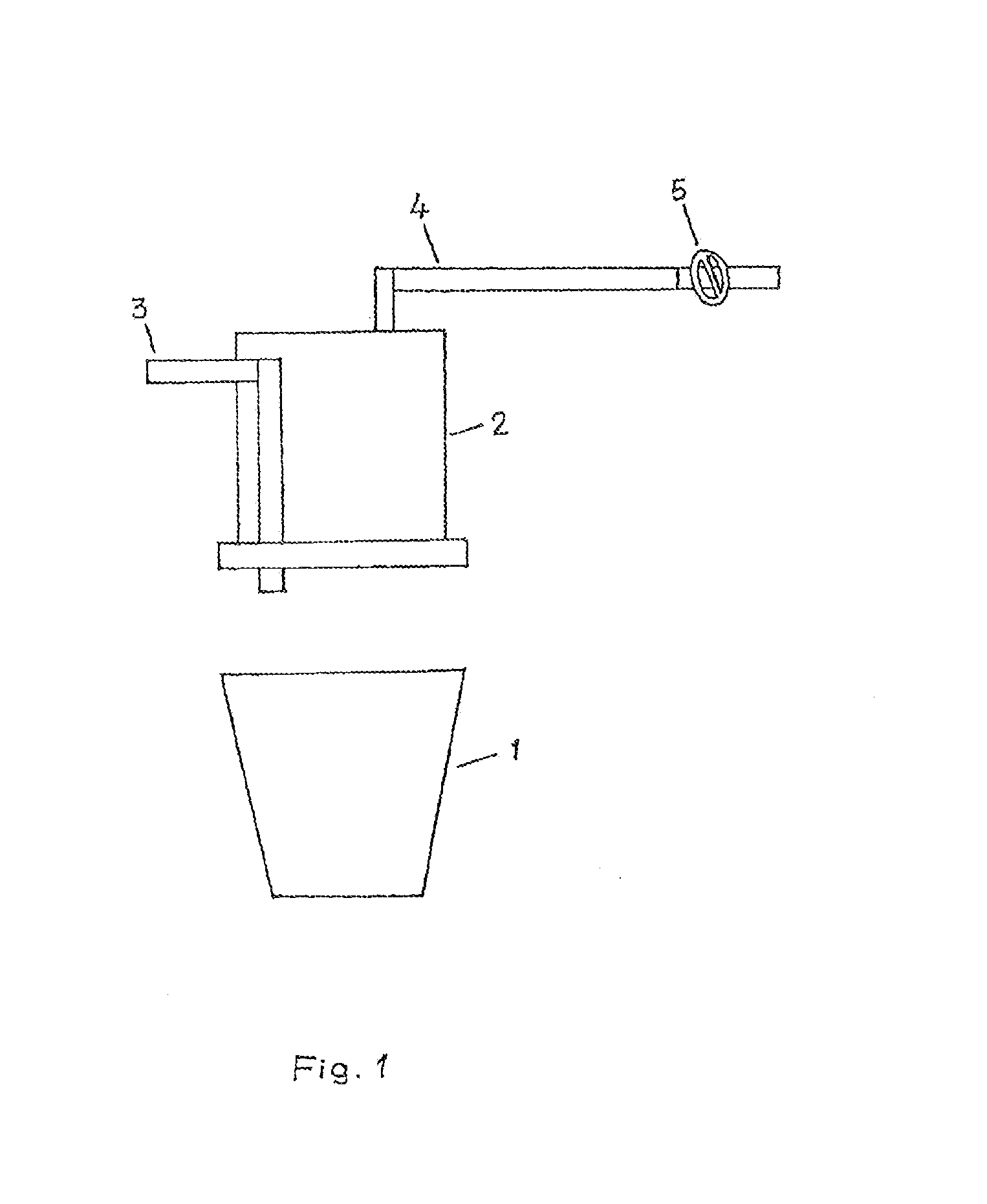Method for Producing Hydrogen and/or Other Gases from Steel Plant Wastes and Waste Heat
a technology of waste heat and hydrogen, which is applied in the direction of gasification process details, inorganic chemistry, combustible gas production, etc., can solve the problems of high production cost and high process cost of hydrogen production, and achieve the effect of reducing the chance of recombination of hydrogen and oxygen, enhancing the hydrogen generation process, and reducing the thermodynamic activity of oxygen in the immediate vicinity of slag
- Summary
- Abstract
- Description
- Claims
- Application Information
AI Technical Summary
Benefits of technology
Problems solved by technology
Method used
Image
Examples
Embodiment Construction
[0018]Water and / or steam is sprayed on LD slag, or other steel plant wastes having a temperature above 1600° C. The waste is either static, for example, in a static reactor or a ladle or a pot 1 or on ground or moving (e.g., being poured or in fluid motion down a slope or on a conveyor). The water sprayed through a water line 3 immediately splits when it comes in contact with the hot slag. The emanating gases are funneled through a hood 2 placed over the area and collected using a gas collection pipe 4.
[0019]The preferred temperature of the molten slag in the reactor is greater than about 1250° C. when water is sprayed into the molten slag.
[0020]The oxygen generated from splitting the water will react with the carbon present forming carbon monoxide. The gas stream comprising hydrogen and carbon monoxide can then be collected from the reactor.
[0021]In the present invention, the production of a gas stream comprises hydrogen and carbon monoxide in the volume ratio of between 1:0.2 to 1...
PUM
| Property | Measurement | Unit |
|---|---|---|
| temperature | aaaaa | aaaaa |
| volume percent | aaaaa | aaaaa |
| volume percent | aaaaa | aaaaa |
Abstract
Description
Claims
Application Information
 Login to View More
Login to View More - R&D
- Intellectual Property
- Life Sciences
- Materials
- Tech Scout
- Unparalleled Data Quality
- Higher Quality Content
- 60% Fewer Hallucinations
Browse by: Latest US Patents, China's latest patents, Technical Efficacy Thesaurus, Application Domain, Technology Topic, Popular Technical Reports.
© 2025 PatSnap. All rights reserved.Legal|Privacy policy|Modern Slavery Act Transparency Statement|Sitemap|About US| Contact US: help@patsnap.com

